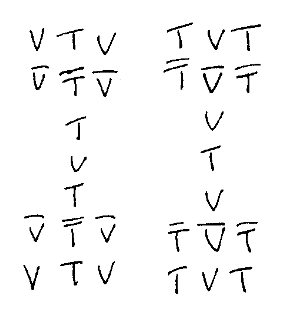Next: Decay Patterns as Phase Up: Brief Introduction to the Previous: Further Extension of the Contents
Retrospectively, after examining considerable numbers of decay patterns, both the W and Z Bosons and the Gluon were identified. As shown later, the gluon was straightforward enough to identify as being a Pion, making there four different flavours of gluon, covering Pion-0 in both up and down types as well as Pion+ and Pion-. Also shown later is that the difference between a Pion and a gluon is that the gluon is created and destroyed near instantaneously, being both the simultaneous input and output of phase transformations. The Pion on the other hand would be the output of some phase transforms, and unlike its gluon incarnation it would have received enough energy to be self-sustaining until it decayed.
The W and Z Bosons on the other hand took longer to work out. The breakthrough was in the identification of the 5x3 quark pattern. It was then possible to identify the Z Boson as being an ultra-heavy flavour of Pion-0 (meaning that there should correspondingly be two variants of Z Boson), and the W+ Boson was identified as an ultra-heavy flavour of Pion+ and the W- an ultra-heavy Pion-. Here we illustrate a W+ Boson:
 figure3-level I-Frame: ultra-quarks in a W Boson arrangement
figure3-level I-Frame: ultra-quarks in a W Boson arrangement
|
The W and Z Bosons are fascinating, because they are effectively comprised entirely of pions. We also identify the gluon as being a "virtual pion" which is created and destroyed simultaneously. There are therefore four different types of gluon because there are four different types of pion. The W and Z Bosons, aside from the binding energy, could therefore be effectively considered to be comprised solely from gluons. If it were not for the huge binding energy, the Bosons would also be instantaneously created and destroyed. Coordinating the simultaneous creation and later the simultaneous destruction of (in effect) five sets of pion pairs however is not possible; this gives a "decay" time to the W and Z Bosons.
lkcl 2017-01-03